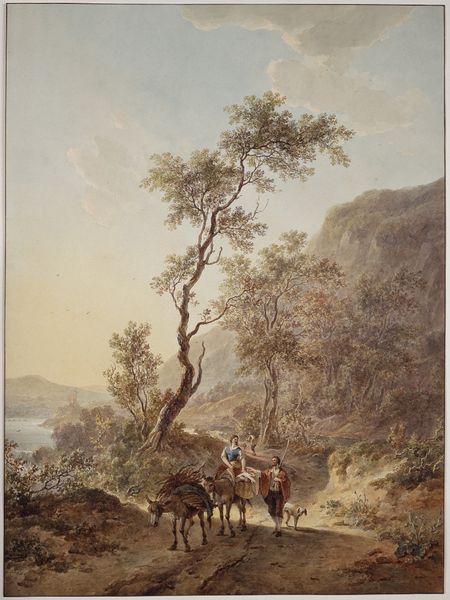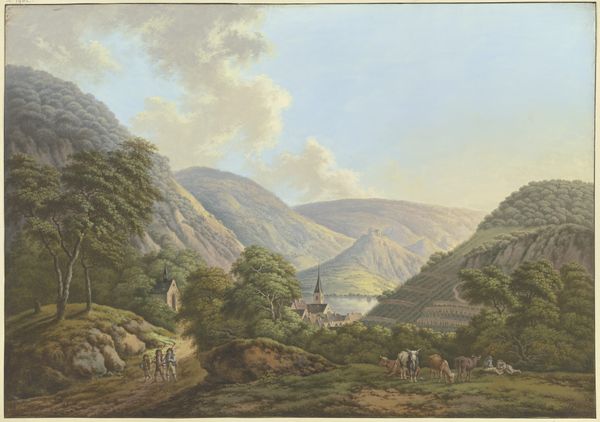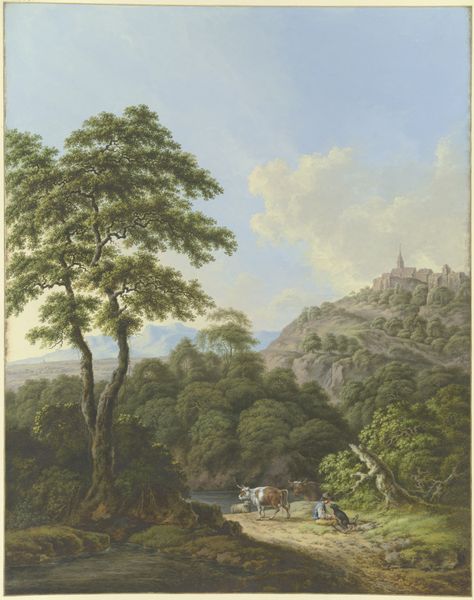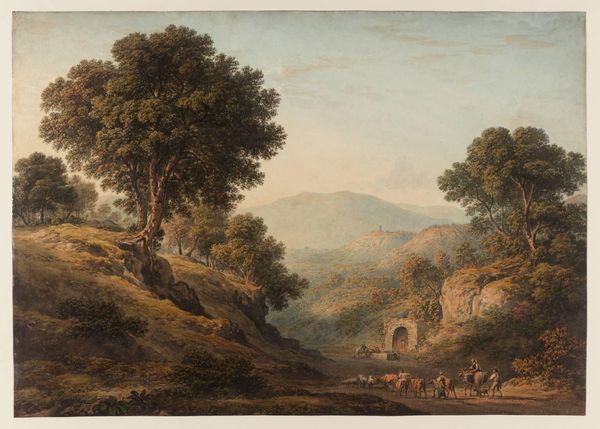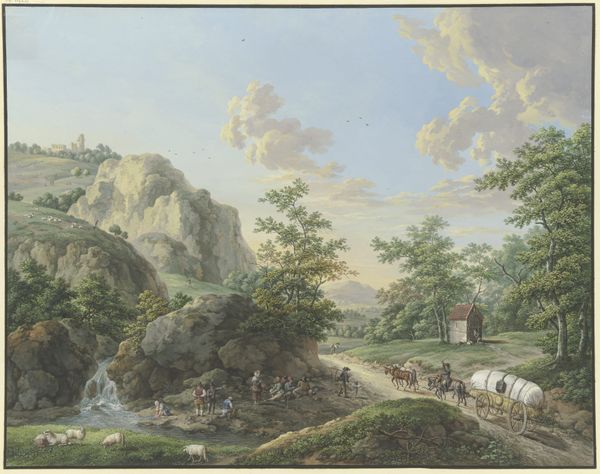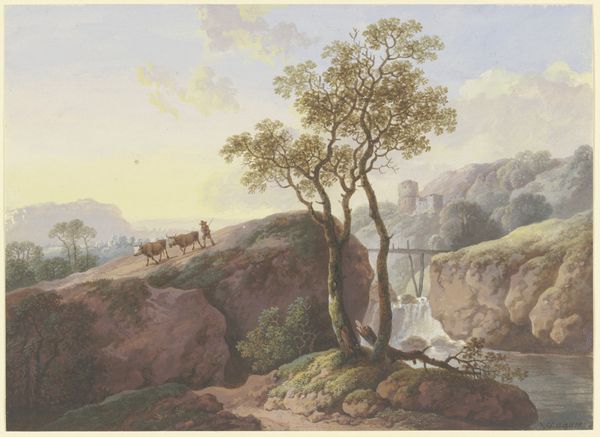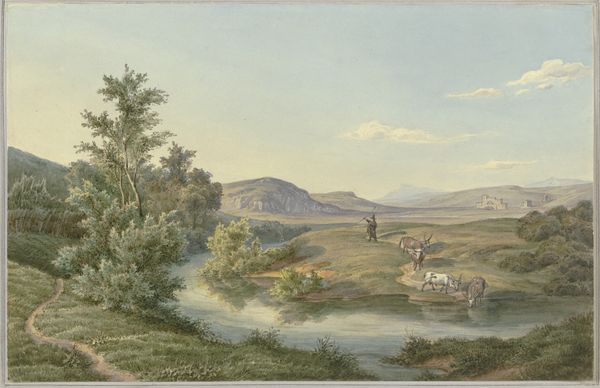
drawing, painting, gouache, watercolor, ink, chalk
#
drawing
#
painting
#
gouache
#
landscape
#
figuration
#
nature
#
watercolor
#
ink
#
romanticism
#
chalk
#
genre-painting
#
watercolor
Copyright: Public Domain
Curator: Before us, we have Jacob van Strij’s, “Italianisierende Landschaft mit einem Hirten,” an artwork from around 1790 to 1795. Editor: It possesses an atmosphere of idealized tranquility. The soft watercolor washes create a delicate, almost dreamlike visual effect. The composition is skillfully balanced, directing the eye into the landscape. Curator: Absolutely. Van Strij was part of a broader artistic trend interested in crafting idyllic landscapes. The presence of a shepherd, his animals, alongside the suggestion of ruins, points to the longing for a simpler, perhaps idealized past, reflecting socio-political issues of the era such as the burgeoning industrial revolution. Editor: I notice the meticulous layering of color and the precise application of detail, particularly in rendering of the trees and foliage. The lines create texture and depth. What stands out is that Van Strij’s medium of choice is gouache, chalk, watercolor, ink, and paint. Curator: This choice in materials suggests that van Strij wanted to bring precision and elegance, but at the same time capture natural, earthly environments. This artwork, now housed in the Städel Museum, shows how 18th century artists found beauty in representing harmonious coexistence. Editor: Yet it feels staged. Note how the shepherd and animals occupy the left, leaving the middle open for the viewer to move to the architectural element set within a romantic setting. There’s also this sense of distance from what the image seems to suggest. The landscape might be idyllic, but also serves as a symbolic gesture. Curator: I agree that this composition is a carefully constructed piece, it doesn’t let viewers fully engage, keeping it representational, rather than raw. This romantic landscape gives a window into past aspirations through van Strij’s delicate lines, that create a beautiful picturesque view of that time. Editor: An interesting point that reflects the complexities of romantic art during periods of change, Jacob van Strij helps us understand the visual and the socio-historical considerations in our analysis and thinking.
Comments
No comments
Be the first to comment and join the conversation on the ultimate creative platform.
